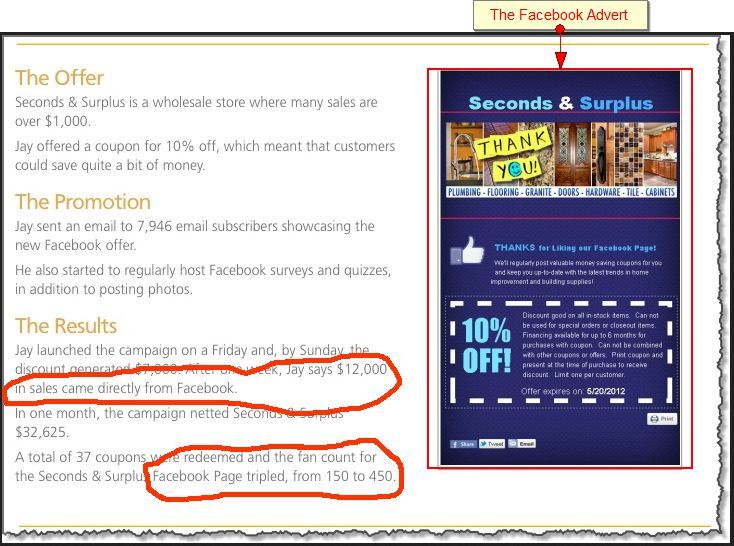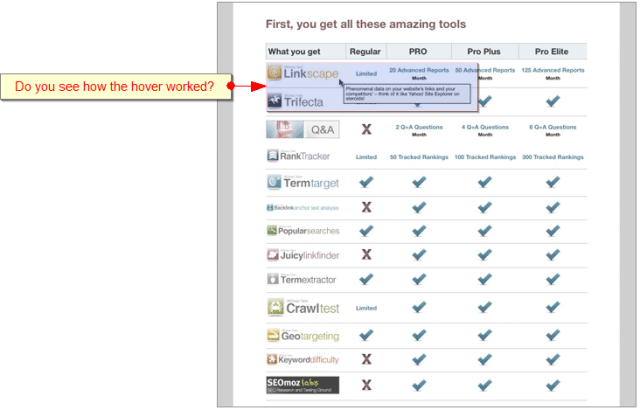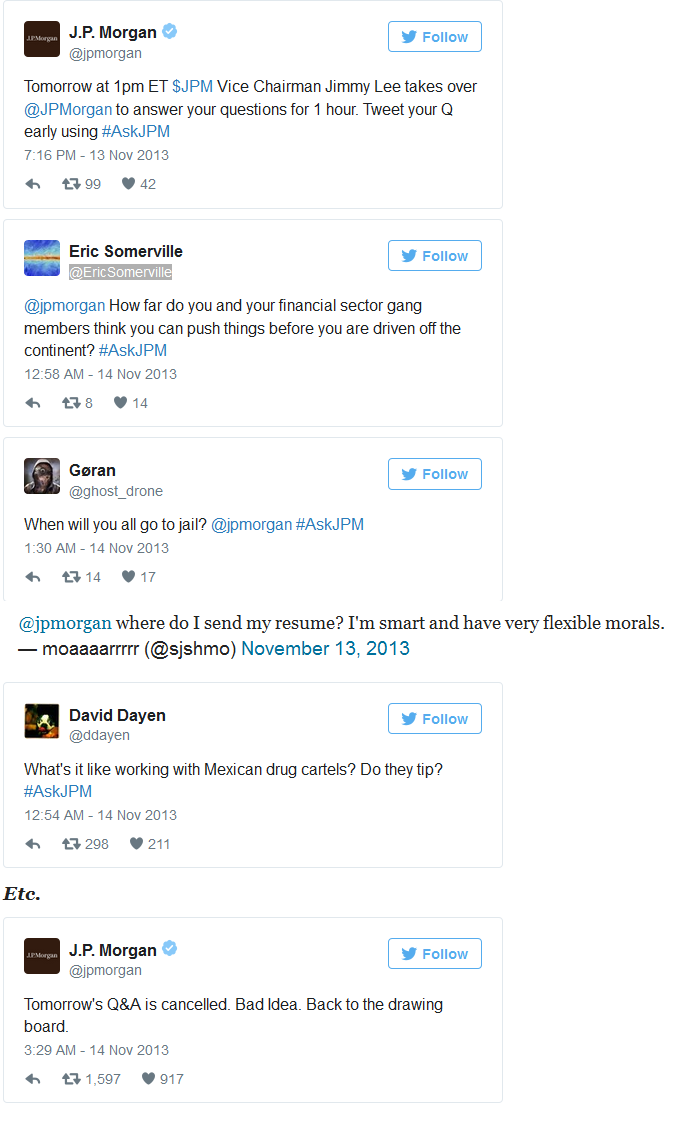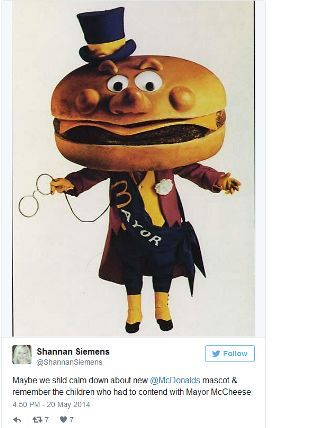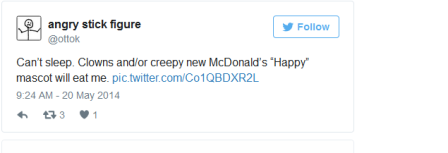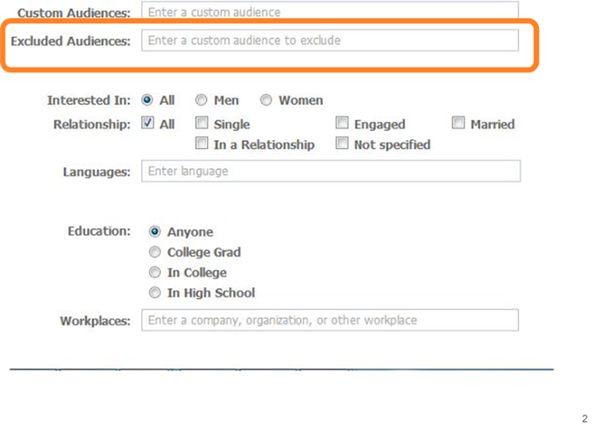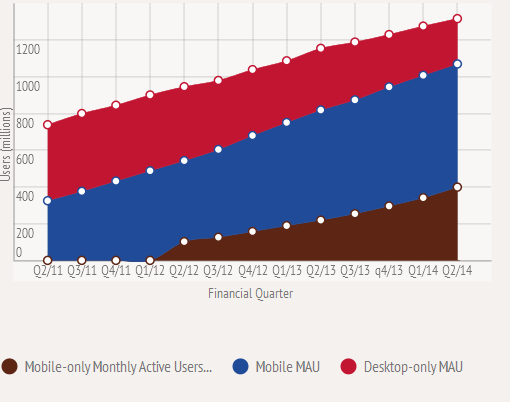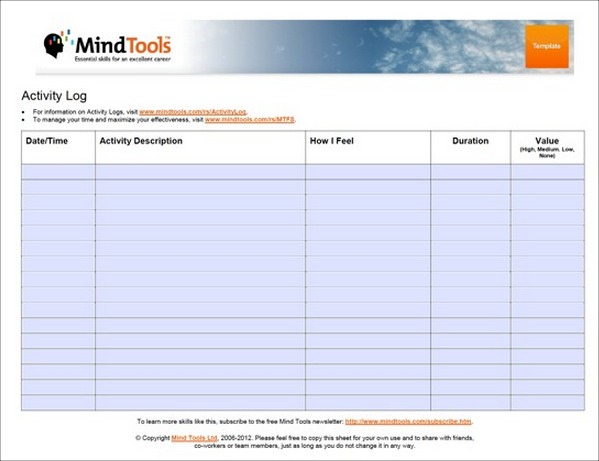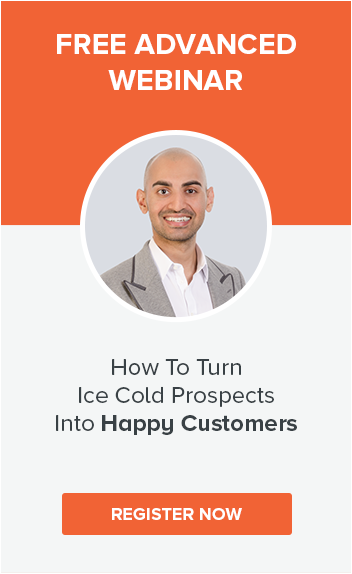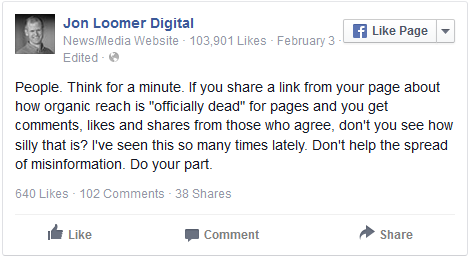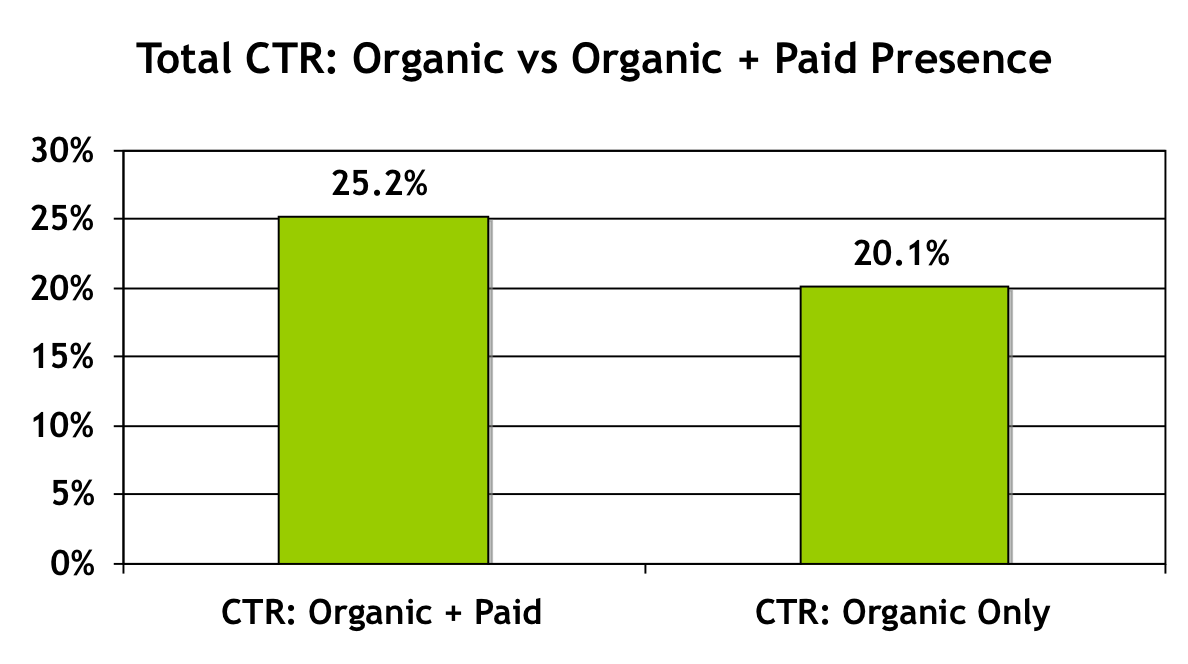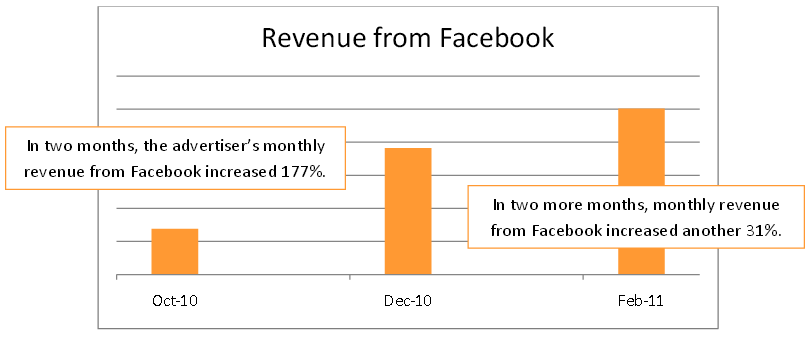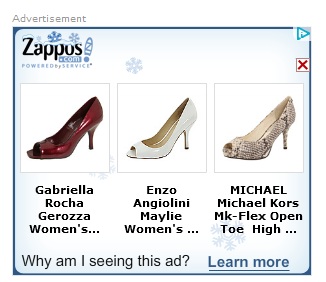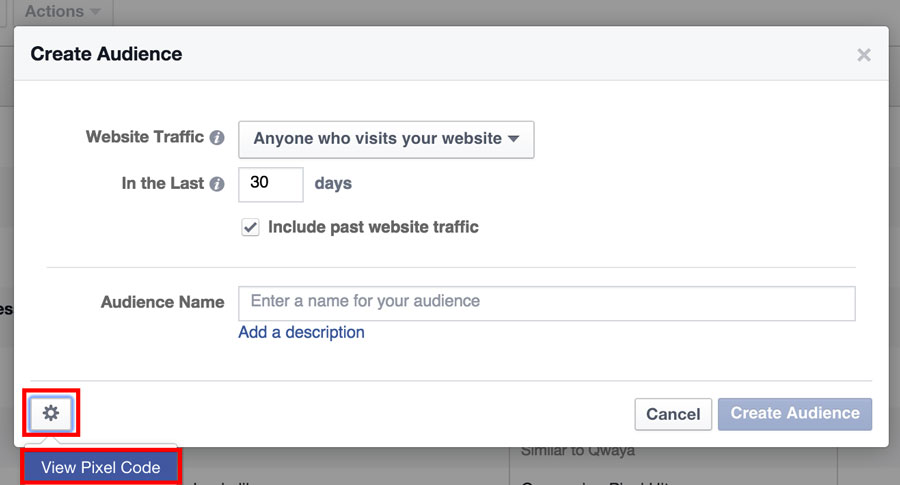When Facebook first began, people took it as a platform to simply converse with friends. The world was reduced to a global village where you could communicate with your friend who went to live abroad and other friends would keenly follow the conversation and join in.
Predominantly used for personal purposes, businesses began to see this as an avenue for marketing their businesses. Since then, social media marketing has become an essential part of marketing and companies have tremendously increased their sales.
Like these ones:
A Tuscan home décor retailer, Elaine Topper of BellaSoleil, offered 10% discount through a special code on a reveal page that prospective clients only saw after liking her Facebook page. Even though her email list was at a mere 1767 subscribers, the results were amazing.
See here:
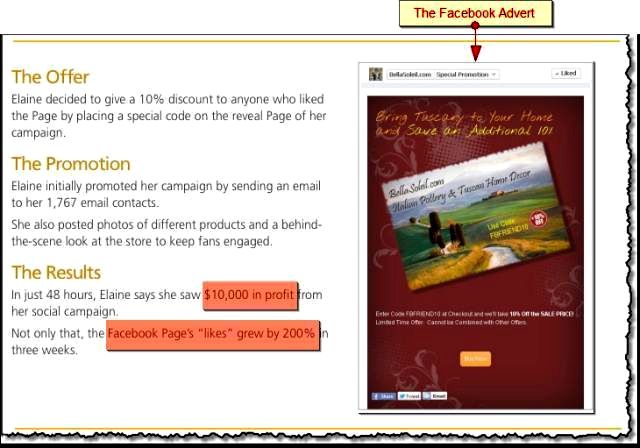
Jay McKeever from Seconds & Surplus offered a coupon with 10% discount after a fan liked the Facebook page. Alongside this advertisement, the business ran a series of quizzes, surveys and also posted photos in an effort to increase engagement.
The result:
Increase in Facebook fans by 300% and $12000 generated sales from Facebook alone.
Source: Jeffbullas
Your business can achieve more than that:
According to B2C, there are approximately 1.39 billion active Facebook users every month. More than 50% of this traffic signs in daily and many of these people spend about 700 minutes monthly, on the social platform.
The skyrocketing potential that Facebook offers caused businesses to spend 122% more per ad unit in 2014. However, what businesses should know is that despite the massive audience and simply paying for adverts, lack of effort in actionable advertising will not result in desired revenue.
So, I think you are now ready to learn. Let us look at how best you can run Facebook ads to have a great conversion rate.
Contents
1. Create Compelling Landing Pages For Your Facebook Leads
You definitely know the importance of a landing page as a way of conducting your online marketing. You sure use it to convert your site visitors or prospects into customers. In addition to this, it offers a perfect chance to understand your most-engaged prospects among other advantages.
Landing pages clearly mean that you are ready to convert. After all, you have achieved your first goal of driving traffic to your landing page. So, what do you do to ensure that your Facebook leads take the desired action?
What is the structure of your landing page? Is it created in a way that will compel your reader to stay on the page or just leave? Marketing Sherpa has published a handbook that clearly explains the severity of the untapped potential of landing pages by most marketers.
The handbook shows that marketers simply do not know how to set up landing pages or mistakenly create overloaded ones. This means that when traffic gets to your page and fail to see focus, they ditch you. It is therefore extremely imperative that you learn how to create compelling landing pages.
What compelling really means:
In 10 words, can you convince a prospect to transact with you as opposed to your next competitor? What makes you the best choice? Can you do this in the simplest way possible without necessarily bad-mouthing your competition?
What value do you offer? Are you speaking to the right audience? To really understand what a compelling landing page is, we will look at how Moz (formely SEOmoz) made $1 million for creating an incredibly convincing landing page.
First, they created a page long enough to tell their story, posting only relevant information. Of course this was after the business researched on its clients. They talked to paying members, free subscribers and paying members who had cancelled.
They chose to become the customer and see first-hand, the good and not-so-good aspects of the business. This was valuable information for their landing pages, because their claims resonated well with their target market.
To attract more traffic and increase curiosity hence, the urge to convert, the business infused the headline with curiosity other than the obvious and cliché ‘buy me’ language.
The first headline:
The second headline:
The second headline raised curiosity among the site visitors. Anyone would want to know how business heavy weights such as Disney and eBay were doing their SEO. After all, these secrets are what have made them so successful, right?
What happened after that?
The business understood that it needed to keep site visitors glued on the page. For any business, this is now your time to pitch. Can you present your goods and services and provide the necessary information in the shortest and simplest way possible?
This is how Moz did it:
The landing page had a handy chart that visitors could hover over any element of the chart and reveal more details. This killed two birds with one stone. It increased awareness on the different array of tools the company offered and clearly showed tools available at each membership level.
Well, these techniques sound awesome but you think you also need to add your industry jargon to sound more serious. Isn’t this the best way to seem serious to your prospects? So, the big question is:
Does industry jargon help?
Well, the straight answer is no! Jargon kills conversions. How many businesses are trying to find new leads every day and turn them into conversions? How many minutes do you think your prospect has before he gets bored and moves on to the next thing?
Jargon is a great time waster. No prospect has the time to keep researching on words used in your sales pitch. Once a difficult word is encountered, your prospect will slow down, get confused and forget why he even visited your page.
The truth is:
Your prospects don’t care if you co-edit the oxford dictionary or if you have a masters in your industry. What people want is to understand what you do, how you do it and why you are the best, in the simplest terms possible.
Want to learn some more?
Please read our ultimate guide on how to build a high converting landing page.
2. Choose And Understand Your Audience
Well, you are free to assume that the 1.39 billion people are free audience you can manipulate. When you compute your potential revenue, you cannot imagine how far your business can reach in terms of revenue and jaw-dropping turn-over.
But, hold your horses!
Only a fraction of Facebook users are your actual market. The big question is whether you know and understand them. Do you know their characteristics? What makes them tick? Maybe this seems too analytical for you, but companies have failed for not understanding their audience.
Examples are:
In 2013, J.P Morgan, a banking and financial services holding company, thought it would engage its audience in an enlightening twitter session. ( Yes, I know we are talking about Facebook but the point is understanding your audience). Unfortunately, the company was ignorant of what their brand represented to people.
Instead of getting more leads, they were subjected to 6 hours of harassment fun, which attracted even respected journalists. Have a look.
In 2014, fast-food heavy weight, van a campaign aimed at children, using a Happy Meal Mascot. Instead of attracting children to the store, many instead ran screaming. The happy meal mascot was downright scary. Who would buy from you if you scared them away?
Now that you have seen the cons, let’s work on how to learn and understand your audience.
You need to ask yourself who your target audience is. For example, single but rich males, married individuals interested in child investment, high school students with no financial inhibitions or 40-year olds focused on retirement investments.
What is the most pressing issue that your audience faces? You can understand this by analyzing their interactions with the business. Based on their enquiries, suggestions and comments, you can understand exactly what your audience needs.
While this sounds pretty simple, there is one little thing that McDonalds for example, failed to remember. They did not understand how its audience would react to their advert campaigns. The idea of using cartoons to attract kids was ingenious but they got it wrong when they used a scary one.
Are there tools to use?
Yes. Facebook runs custom audience tool that allows advertisers or marketers to target their ads to a particular set of people with whom they have already established a relationship with. These target audiences are defined by phone numbers, email addresses among other indicators.
How it works:
Using the power editor, choose ‘custom audiences’ and then click on ‘create audience’. You will then name your audience and describe it in the blank spaces provided. This audience will then be loaded in the power editor where you will select an ad campaign and send to your preferred audience.
A great addition to this tool is the fact that you can decide which audiences to exclude in your campaigns. For example, if you are a hotel running a speed dating advertising campaign, you can choose to exclude married people from your fans.
Let’s see how the screen should look.
Source: Hubspot
Source: Hubspot
3. Create Mobile-Friendly Adverts
Facebook revealed statistics that every marketer should know. Out of the 1.39 billion monthly users, 399 million use the platform on their mobile phones only. In addition to that, while general Facebook usage increases by 14% annually, its mobile usage increases at an even faster rate, of 31%.
Source: TheVerge
What This Means:
If you don’t have mobile friendly adverts on Facebook, then your conversion rate is going to be significantly low. Do you know why? Let’s be real, you will post an advert that will require your leads to visit your website where they are to perform a certain action.
Then,
When your prospect clicks on your Facebook advert, he gets directed to your site where he hits a dead-end. You know why? Your site is not mobile-friendly! Want to know how grievous this is to your business, read these statistics carefully.
96% of consumers have encountered mobile-unfriendly sites yet, 75% of them would actually prefer mobile-friendly sites. 48% of this traffic gets frustrated when they cannot proceed and opt to visit other alternative sites. As a result, you business loses millions of revenue.
4. Write An Irresistible Lead Magnet
A lead magnet is exactly like what a pick up line is. For a man to get a lady’s contacts, he has to be creative and compelling enough to persuade her to provide her contacts. Now that you can relate, let’s see how this works in running Facebook ads that convert.
Usually, a lead magnet is used to offer your leads something that will cause them to give you details of their contact information. There are so many options you can choose when deciding what to give away. But, you need to ensure that you use the best lead magnet for your kind of business.
Which lead markets are good for your business?
We are glad you asked. There are many types of lead magnets you can use. Today, we will briefly highlight 5 lead magnet ideas and show you people who have successfully used them. You can in turn decide which one is best for your kind of business.
– Guides Or Reports
This is one of the most common lead magnets. As much as it is very popular, you need to be careful how you use it because it is easy for you to violate the specificity rule. A good example of a guide is a free report that Joe Polish offered at Piranha Marketing.
– Cheat Sheets
Unlike reports which are very detailed, cheat sheets or handouts are shorter, usually a page or two. These handouts are basically a summary of what the entire report entails, cutting straight to specific points saving the reader time otherwise spent reading a report.
– Resource List or Tool Kit
For a business that offers solutions to clients, such as software or career development companies, resource lists are incredible lead magnets. A great example is this company that offers a free time management toolkit in exchange for contact information.

True to their word, they deliver the toolkit as seen below.
– Video Training
Clients are more likely to respond to video adverts and lead magnets mainly due to the visual attraction that videos offer and a better learning experience. One person who has nailed this art is Neil Patel, who offers free webinars. Here is one of his free webinar offers.
– Software Download or Free Trial
If you are selling software or a tool, you can offer free trial for a limited time to allow your users to test your product. At Truconversion for example, we’ve had beta users who have tested our product.
Here is what you will find on our homepage.
Other lead magnets you could use include free shipping offers, discounts and surveys among others.
5. Focus On Driving Qualified Traffic From Facebook To Your Landing Page
If you are smart, you will ensure that you find all possible ways of leveraging Facebook to make the most out of your marketing campaigns. One of these ways is using the Facebook PPC advertising. This is a pay-per-click advertising option that works differently from search engines.
Facebook offers both organic and PPC advertising. Organic advertising is what everyone gets for simply being part of Facebook. All you need is to simply generate a post and share it with your fans or target market.
But, is this enough?
Statistically, Facebook says that your average organic posts reach only 16% of your fans. Consequently, you need to consider paying for ads in order to reach a wider audience. Well, some people have complained about this revelation but honestly speaking, how do you expect Facebook to make money?
Here is what they said, alongside reactions.
Clearly, not many people took this revelation lightly. As you can see, someone with over 23,000 fans could only reach 5% of her audience. Fact is, you cannot stop your content marketing because organic marketing is not paying off.
So, what do you do?
If you want to purely rely on organic advertising, your content will be your greatest savior. Interesting content that will cause anyone to click on your post and share it will expose you to a bigger audience outside your fan base.
Look at this post for example:
After Facebook released the shocking statistics, Jon Loomer Digital shared on Facebook its sentiments towards people claiming that organic reach is dead. At that time, the page had only 103,901 likes and within 12 hours, 28,000 people had been reached organically.
The organic reach also led to generation of 640 likes, 38 shares and 102 comments. Clearly, we cannot really conclude that organic reach is dead. It is only fair to say that your organic reach is highly dependent on what you post.
Here is how fast the post circulated within 12 hours.
There is also another way:
Try merging organic advertising and pay-per-click advertising. When you pay for Facebook advertising, your posts are exposed to a wider audience. From this point, your posts also enjoy organic advertising where the people reached can share the post to an even wider audience.
Compared to using either of the platforms or both, a combination of the two methods performs best. Look at this graph for proof.
Source: Wpengine
Don’t believe this graph?
We will look at two case studies of businesses which used Facebook paid advertising and see their Return On Investment (ROI). You can then use information we provided above on the success of organic reach and compute for yourself the incredible reach you can enjoy when you combine these two strategies.
Case Study 1:
While Zac Johnson was surfing the internet, he came across a dating offer that was geared towards men playing golf. He loved this opportunity from one of his networks PeerFly, and decided to promote the offer on his Facebook page.
He created an ad campaign, paid for it and tracked it. After spending only $17.37, he earned $44, which was 234% ROI. This is very quick and easy money. Now imagine running multiple ad campaigns.
Lessons learnt from Zac Johnson:
Zac teaches entrepreneurs 3 important steps to follow when advertising on Facebook.
– Find An Offer To Promote
Sometimes, your business does not have to rely on its own campaigns. Ever heard of affiliate marketing? This is what Zac was doing. The main aim is for you to convert prospects into clients, for your business or for your networks. Either way, the goal is to earn good money.
Zac was also very careful on what offer to promote. The offer had to have irresistible benefits, thereby increasing the chances of attracting traffic. In this case for example, a free sign up would be rewarded with free date-searching, free date-matching and free membership.
– Create Your Ad Campaign
Zac understood that he needed to have an effective ad campaign. He used the freely available Facebook Ads tool. At this stage, two things were of utmost importance- an ad copy and targeting. The ad copy had an image for Google images and the targeting helped him define his target audience.
– Track Your Campaign
This was also a very crucial and analytical time. With the campaign getting live, Zac needed to track its trajectory and decide on the daily ad budgets. After a few days of testing and spending roughly $17, Zac got $44 back.
This is how tracking looks like:
Here are his results:
Case Study 2:
Web Metro, a leading high-end camera equipment site, had a great regional presence but wanted to create more brand awareness nationwide. Additionally, it sought to increase sales from its region. To achieve this, the business decided to run 2 paid Facebook campaigns.
The first campaign mainly aimed to increase brand awareness and increase the company’s fan base. It targeted people interested in nature, wedding and sports photography, each group having its own custom message. For example, there was specific information for nature photography lovers.
After just three months, the brand was able to increase its fans by 347%, after spending $0.24 per fan. The Web Metro Cost Per Fan (CPF) was actually lower than the CPF reported by Web Trends.
The second campaign aimed at driving revenue had 3 main goals. To advertise the camera equipment provider’s services, promotion codes and available product lines. In just two months, the business‘s revenue increased by 177% and by 31% in the subsequent two months.
Here is how business looked in just four months.
Source: RevanaDigital
Important things to note:
Now that we are talking money and its potential to increase your sales, you still need to know and understand your economics. The major thing to note at this point is your Cost Per Acquisition. This is basically how much a click will cost you.
In the Web Metro case study, the fan CPA was at $0.24. For every acquired fan, Facebook was deducting the business $0.24. Now, assuming that Web Metro had this same budget for organic traffic, the company would get best results on the PPC advertising plan.
Is there proof?
Absolutely! Research by Search Engine Watch has showed that if you have a compelling offer, a high-converting landing page and clickable Facebook ad copy, then your PPC traffic will convert 3.5 times better than non-PPC traffic.
So, after driving qualified traffic to your landing page, what next?-
– Set Up Conversion Tracking
This has to be done properly to help you effectively track your desired conversions. In the Facebook Ads setup area, there is a tab that says ‘prepare to advertise’. Clicking on this tab will help you optimize and track conversion through placing a conversion pixel on your site then adding it to the Facebook ad.
You will only need to install the conversion pixel plug-in in your site in order to incorporate it in your ad. In WordPress for example, you can download and install the Facebook Tracking Pixel plugin, an awesome addition to your landing pages.
You need to note:
Facebook has announced that they will be removing the conversion tracking pixel in the second half of 2016. Instead, businesses will use the Facebook pixel for conversion tracking, optimization and remarketing.
This is how the new Facebook Pixel will work.
The tool has been designed to combine the power of the custom audience pixel and conversion pixel. This means that you will use only one tool to measure, optimize and build audiences for your ad campaigns, making advertising and tracking much easier.
Basically, since the Facebook pixel is a merger of the custom audience pixel and conversion pixel, these two tools will complement each other, by one having a feature that the other lacked. As a result, you will perform 6 tasks. These are audience targeting, lookalike audiences, conversion tracking, conversion optimization, dynamic product ads and custom conversions.
Here is how the dashboard will look like.
You can learn more about the Facebook Pixel on the Facebook website. You can also download our all-analytics tool that will tell you why your site visitors are leaving. We have a variety of conversion optimization and analytics tools such as heatmaps, conversion funnels, surveys, visitor recordings and feedback polls among other tools.-
– Create a Powerful Advert Design
You might wonder which between your landing page or your advert is responsible for converting your leads. Truth is, these complement each other. They both play a vital role in conversion. For this reason, you should not neglect your ad design while you fully focus on the landing page.
Filip Galetic, an independent social media & internet marketing specialist and solopreneur, recently commented saying this:
While he has a point, he seems to have gotten wrong that success of marketing is based on a synergy of efforts. Important elements such as cost per click, amount of traffic, landing page, conversion and the advert all play a role in the final success of the advertisement.
Banner Flow understands this aspect of advertising and in turn provides 8 key ideas for optimizing your advert design as well as landing pages. The size and placement of your advert will greatly determine how often it is seen, consequently affecting the click-through rate.
Your advert should have graphical elements. The most important thing to note here is that the image and graphical choices should be representative of your business or your campaign. Remember that before reading, your target audience will decide whether to read your advert in a split-second based on your images.
For example, this advert from Zappos.
Color, color and color! Do you understand the role of color in marketing? Color increases brand recognition by 80% and 92.6% of your prospective clients consider color when purchasing an item. This means that an attractive color will ensure your audience spends time on your page.
Then what?
What do you want people to do after seeing your advert? This is where a call to action (CTA) comes in. this has to be strong and convincing. Remember you need to know and understand the best CTA practices in order to formulate the right ones.
Remember:
In an advert, you have limited space and time to convince your prospects to take action. Ensure that you keep it short, clear, convincing and straight to the point. The landing page will now do the rest.
6. Perform Internet-Based Targeting
The ability of Facebook custom targeting your audience is extremely versatile. You have the ability to select audience based on a wide range of factors such as age, location, gender, interest, education, relationship status among others.
The audience targeting tool allows you to choose your audience with either one or a combination of targeting options available. Let us see how this basically works.
You are allowed to define your audience and even give them a custom name that you will easily remember and relate to. You can also decide the type of people to exclude from your audience. Most of the time, this people have no value to what you intend to achieve.
Three tips to remember.
One: Target users you already know have more chances to convert. You need to remain focused on your goal and only pick the people who will help you achieve it.
Two: Exclude people you had already converted. Like we have said here before, why bait the rod when you have the fish? Instead of retargeting people you had converted earlier on, devise ways of maintaining your clients while you seek to increase traffic and convert your prospects.
Three: Retarget people who had clicked on your ad, visited your landing page and failed to convert. This is anyone who saw your landing page but did not get to the thank-you page. At this point, your marketing should be designed to trigger them to pick up from where they left from.
What different thing should you do now?
To increase your chances of a successful retargeting mission, it is important to optimize your landing page and work to kill your website bounce rate.
7. Low- friction Conversions
Currently, over 85% of PPC professionals are paying attention to Conversion Rate Optimization (CRO) simply because it is the ultimate goal of any advertising venture. While several businesses have now focused on running social media campaigns, most are doing it the wrong way.
Let’s focus on the good side:
Have you heard of low-friction conversions? Let me explain in form of a question. In which of these two instances will you feel forced to do something? When you are asked to buy something or just sign up? Truth is, Facebook adverts that immediately ask you to buy are no different from a bully.
As a prospective client, one needs to be wooed. You should first ask your client to sign up, then send a few messages that will engage him or her and raise her interest in the business. Believe me, it is easier to earn the loyalty of a client you enticed into the business than a one-time bullied buyer.
Facebook users are known to be unpredictable and will most likely click back to Facebook once your advert leads them to a ‘BUY ME’ page. At this point, they will be happy to go as far as providing their email address, filling out a short lead form or signing up for your service.
How Companies use this:
Successful businesses such as Groupon, Fab and AppSumo are great examples of businesses which perfectly run low-friction conversions. The example below is what happens when you visit the groupon website. A simple email and zip code request.
Do you remember our discussion on the lead magnet? This is where you apply it. Instead use a high quality lead magnet and the rest will follow.
But, wait! I am in E-commerce:
To some extent, this advice does not seem applicable to you if you are in e-commerce as opposed to consulting and marketing among other trades. However, it is a general rule that your prospective clients should be given time to understand what you do.
What you could do is simple. Send traffic to your product pages and make sure that the landing page is attractive. At this point, display items that will force your traffic to get curious and want to learn more. Still, take it slow and entice your traffic with deals such as sales and discounts.
The general tactic:
Set up a conversion funnel. While you go slow on your prospects, remember to be time and money-conscious as well. It is important that you test your performance and determine what tactics are working for you and which ones aren’t. After this, you will know precisely when to ask for sales.
How do you track performance?
I am glad you asked. It is pretty simple. The Truconversion visitor session recordings will help you watch your traffic’s browsing journey and know at exactly what point they are stopping and where they spend the most time.
Additionally, we also have a conversion funnel that analyzes your sales process to decrease drop outs. Here is a screenshot of statistics generated from the Truconversion conversion funnel.
Generally, the key things to monitor are your conversion and performance tracking. It is important that you note, at no point should you resort to high-friction conversions. They are a sure way of losing your prospects in the quickest way possible.
Final Thoughts
Facebook advertising is a completely essential part of your business that you need to tap. The ability of the site to increase your sales and revenue is yours to decide. This is because your success is entirely pegged on your efforts to learn the best advertising practices and keeping up with the latest trends.
As you have seen for example, by mid-2016, the Facebook pixel will be the new way of optimizing your conversions and targeting on Facebook. Since this is not an area that you have tested before, it is upon you to take time and learn.
Currently, they have a page which we cited earlier on, that you can use as a resource centre. In case you need any clarifications you can talk to customer support who will in turn guide you. You should also keep it here as we continue to enlighten you on best conversion practices.
Lastly, we are an all-in-one analytics tool that will help you understand why your site visitors do not convert. This is coupled with our extensive team of experts and resource materials that will guide you on how to seal your conversion loopholes. Sign up with us today to get the Truconversion tool.
What other strategies would you recommend? Have you signed up with Tru conversion yet? What is your experience?

